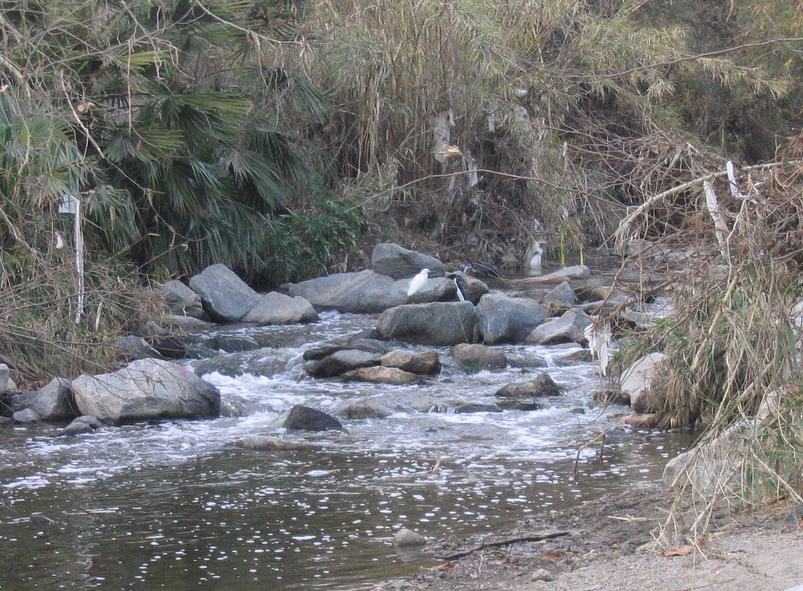
Working with Audubon California has taken me to all corners of the state – from the Salton Sea in the far southeast corner to the Klamath National Wildlife Refuge Complex in the far north, and everything in between. I’ve walked deserts, stood among tall trees, shivered on windy coastlines, traipsed through muddy wetlands, wandered through the vast agriculture fields, and shaded under wide oaks in the grasslands.
In every one of these places, I’ve seen birds. And I’ve also seen plastic grocery bags.
The good news is that I’ve seen far fewer plastic grocery bags on California’s landscapes in the last year or two – and that’s certainly due to the huge statewide momentum to halt the use of these single-use plastic grocery bags. First came the awareness of what these bags do to wildlife and habitat, then came the flood of local measures banning their use. In 2014, the California State Legislature finally recognized the momentum of public will and banned them for good. Sadly, legal pressure from the bag manufacturers suspended implementation of that law, and now we must affirm that law at the ballot box.
This is why Audubon California endorses Proposition 67 on the Nov. 8 ballot in California. We’ve come too far with the removal of this blight on our environment to take a step back now.
At Audubon California, we come across a lot of stories, photos, and video of birds tangled in fishing line, oil sludge, rope, garbage, and yes, plastic bags. These problems tend to hit marine birds the most – pelicans, gulls, albatrosses, waterfowl, shorebirds. You don’t have to be a staunch bird advocate to find this kind of thing heartbreaking.
I don’t want to mislead the reader here. Plastic bags are not the greatest threat to birds – climate change, habitat loss, disturbance, and lack of food are much bigger problems. But that doesn’t mean we shouldn’t work to reduce the impacts of single-use plastic bags. Conservation science certainly suggests that we should address the greatest threats first, but it also notes the importance of practicality, of prioritizing those things that are beneficial and possible in the short term. Moreover, birds and other wildlife are better able to deal with the ultimate threats of climate change and drought if we remove the other stresses from their ecosystems.
Let me put it this way: It still makes sense to wear seatbelts even though heart disease kills far more people than car accidents.
Birds are our focus at Audubon, but there’s another aspect of the ban on single-use bags that’s important to consider, and that’s the blight issue. Marcos Trinidad, the director of our Audubon Center at Debs Park in northeast Los Angeles talks about how plastic bags tend to gum up the Los Angeles River, particularly in those few areas where the river is vegetated and lush. Plastic bags tend to get hung up on trees and shrubbery, and dry out in the sun for weeks and months, eventually pulling apart into pieces that drift to water’s edge. Here, the plastic just piles up and is sometimes eaten by birds that mistake the debris for food.
At the beginning of this piece I mentioned that I’ve seen plastic bag pollution in some of California’s greatest landscapes. But it’s important to note that this pollution also wrecks our neighborhoods and affects everyone’s quality of life.
I hope that you will join us in supporting Proposition 67 on Nov. 8.
Brigid McCormack is executive director of Audubon California.
By Brigid McCormack
Monthly Giving
Our monthly giving program offers the peace of mind that you’re doing your part every day.




